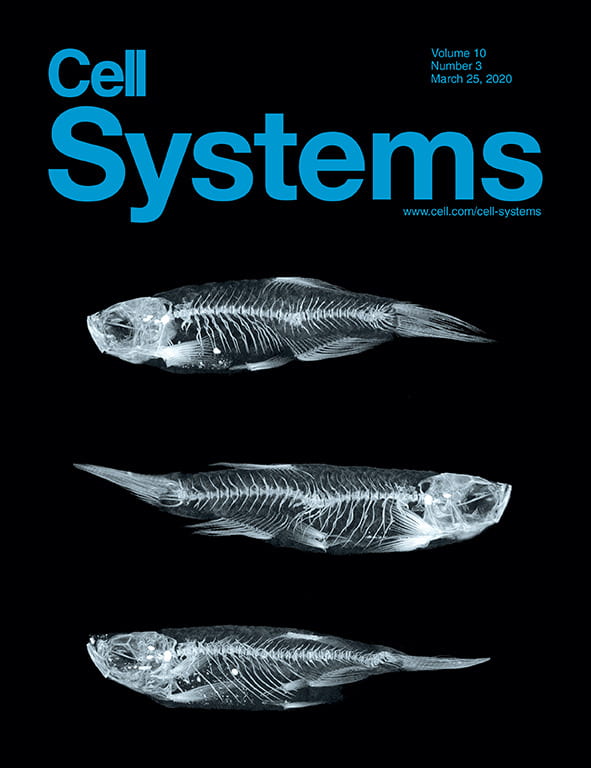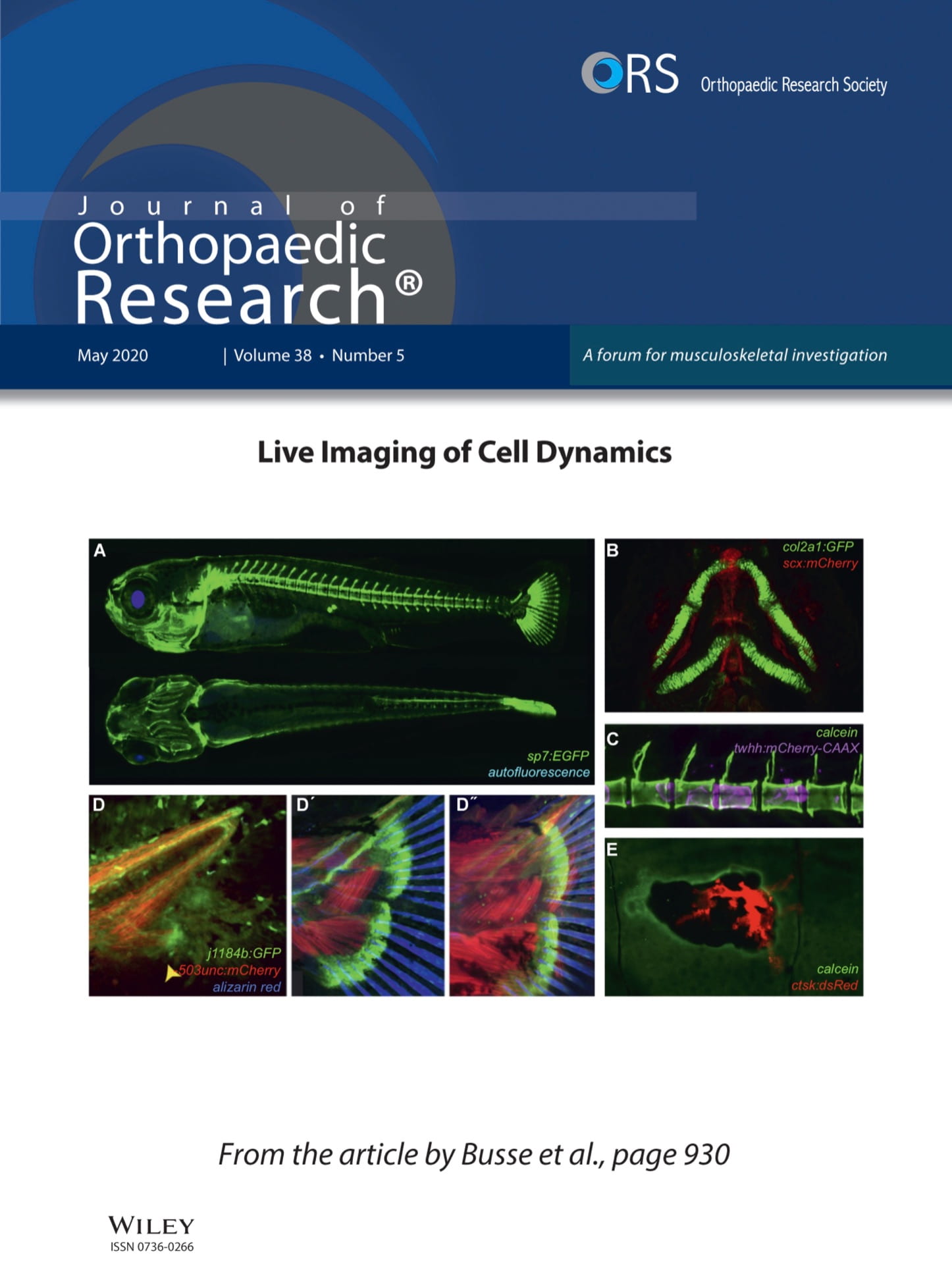COVERS
FEATURED PUBLICATIONS
Identification of wnt16 as a gene that couples muscle and bone development
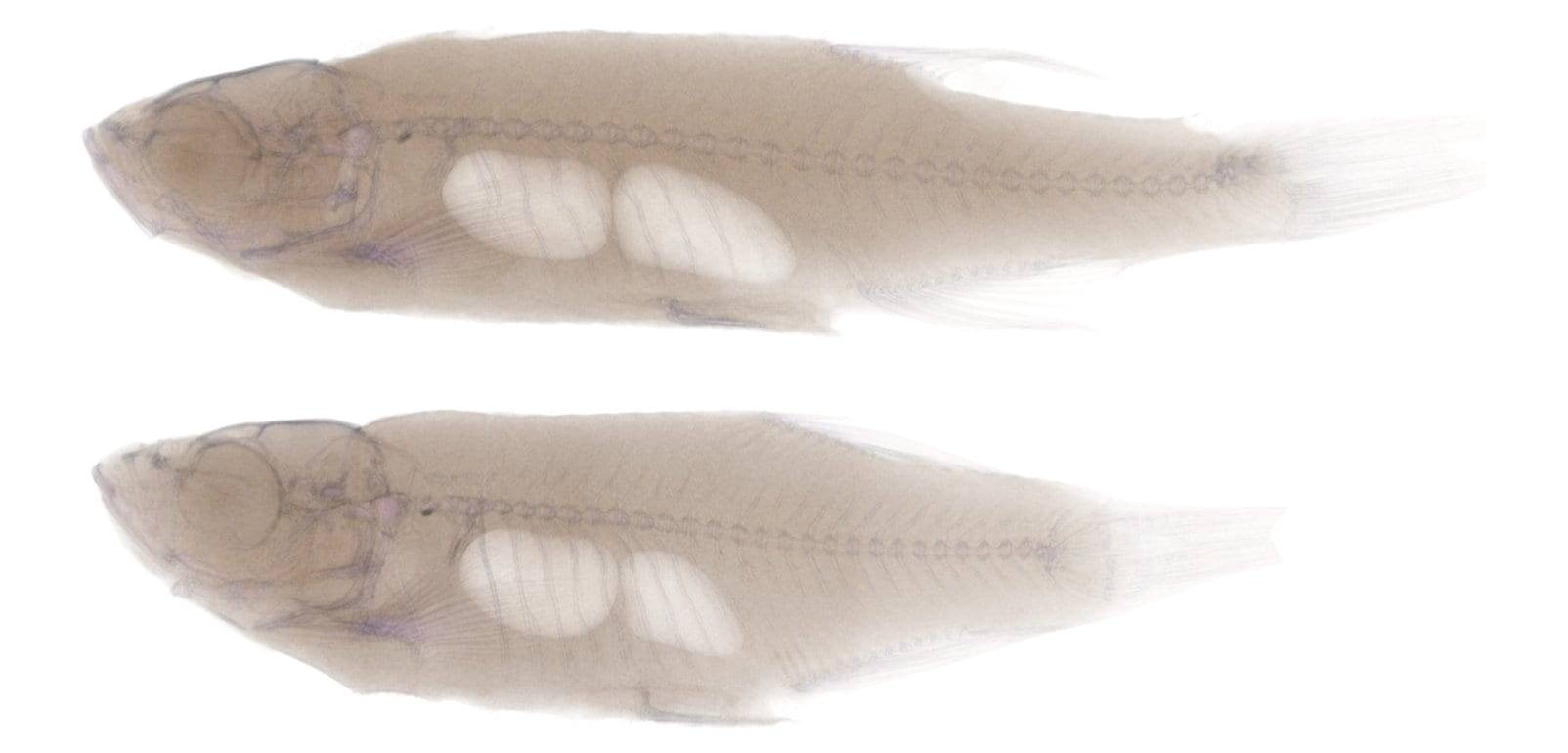 In humans, genetic variants (DNA sequences that vary amongst individuals) have been identified that appear to influence two tissues, bone and skeletal muscle. However, how single genes and genetic variants exert dual influence on both tissues is not well understood. In this study, we found that the wnt16 gene is necessary for specifying the size and shape of both muscle and bone during development in zebrafish. We also disentangled how wnt16 affects both tissues: distinct cellular populations adjacent to muscle and bone secrete Wnt16, where it acts as a signal guiding the size and shape of each tissue. This is important because in humans, genetic variants near the WNT16 gene have effects on both bone- and muscle-related traits. This study expands our understanding of the role of WNT16 in bone and muscle development, and helps to explain how genetic variants near WNT16 affect traits for both tissues. Moreover, WNT16 is actively being explored as a target for osteoporosis therapies, thus our study could have implications with regard to the potential of targeting WNT16 to treat bone and muscle simultaneously.
In humans, genetic variants (DNA sequences that vary amongst individuals) have been identified that appear to influence two tissues, bone and skeletal muscle. However, how single genes and genetic variants exert dual influence on both tissues is not well understood. In this study, we found that the wnt16 gene is necessary for specifying the size and shape of both muscle and bone during development in zebrafish. We also disentangled how wnt16 affects both tissues: distinct cellular populations adjacent to muscle and bone secrete Wnt16, where it acts as a signal guiding the size and shape of each tissue. This is important because in humans, genetic variants near the WNT16 gene have effects on both bone- and muscle-related traits. This study expands our understanding of the role of WNT16 in bone and muscle development, and helps to explain how genetic variants near WNT16 affect traits for both tissues. Moreover, WNT16 is actively being explored as a target for osteoporosis therapies, thus our study could have implications with regard to the potential of targeting WNT16 to treat bone and muscle simultaneously.
See our ISCRM writeup!
EMT and MET during appendage regeneration
 Zebrafish regenerate fin rays following amputation through epimorphic regeneration, a process that has been proposed to involve the epithelial-to-mesenchymal transition (EMT). We performed single-cell RNA sequencing (scRNA-seq) to elucidate osteoblastic transcriptional programs during zebrafish caudal fin regeneration. We show that osteoprogenitors are enriched with components associated with EMT and its reverse, mesenchymal-to-epithelial transition (MET), and provide evidence that the EMT markers cdh11 and twist2 are co-expressed in dedifferentiating cells at the amputation stump at 1 dpa, and in differentiating osteoblastic cells in the regenerate, the latter of which are enriched in EMT signatures. We also show that esrp1, a regulator of alternative splicing in epithelial cells that is associated with MET, is expressed in a subset of osteoprogenitors during outgrowth. This study provides a single cell resource for the study of osteoblastic cells during zebrafish fin regeneration, and supports the contribution of MET- and EMT-associated components to this process.
Zebrafish regenerate fin rays following amputation through epimorphic regeneration, a process that has been proposed to involve the epithelial-to-mesenchymal transition (EMT). We performed single-cell RNA sequencing (scRNA-seq) to elucidate osteoblastic transcriptional programs during zebrafish caudal fin regeneration. We show that osteoprogenitors are enriched with components associated with EMT and its reverse, mesenchymal-to-epithelial transition (MET), and provide evidence that the EMT markers cdh11 and twist2 are co-expressed in dedifferentiating cells at the amputation stump at 1 dpa, and in differentiating osteoblastic cells in the regenerate, the latter of which are enriched in EMT signatures. We also show that esrp1, a regulator of alternative splicing in epithelial cells that is associated with MET, is expressed in a subset of osteoprogenitors during outgrowth. This study provides a single cell resource for the study of osteoblastic cells during zebrafish fin regeneration, and supports the contribution of MET- and EMT-associated components to this process.
See our ISCRM writeup!
Rapid testing of disease genes through mosaic analysis
Watson CJ, et al. Phenomics-based quantification of CRISPR-induced mosaicism in zebrafish. Cell Systems. 2020. 10:1-12.
 Genetic mosaicism manifests as spatially variable phenotypes, whose detection and interpretation remain challenging. Watson et al. identify biological factors influencing phenotypic patterns in the skeletons of CRISPR-edited mosaic zebrafish and establish methods for their detection using large-scale phenotyping.
Genetic mosaicism manifests as spatially variable phenotypes, whose detection and interpretation remain challenging. Watson et al. identify biological factors influencing phenotypic patterns in the skeletons of CRISPR-edited mosaic zebrafish and establish methods for their detection using large-scale phenotyping.
- Clonal clusters arising from CRISPR editing follow a universal size distribution
- Distinct phenotypic patterns arise from mosaic gene loss
- Large-scale phenotyping heightens sensitivity in detecting somatic mutant populations
See our Science in Seattle writeup!
Using microCT to rapidly quantify 100s of measures in the adult zebrafish skeleton
Hur et al. establish a microCT-based workflow to rapidly quantify 100s of measures in the adult zebrafish skeleton.
- Establishes methods to profile hundreds of phenotypic measures comprised of morphological and densitometric traits at a large number of sites within the axial skeleton of adult zebrafish.
- Vertebral patterns confer heightened sensitivity, with similar specificity, in discriminating mutant populations.
- Analyzing phenotypic patterns may increase productivity in genetic screens, and facilitate the study of genetic variants associated with smaller effect sizes, such as those that underlie complex diseases.
- FishCuT software is available to the public
Zebrafish models of human brittle bone diseases
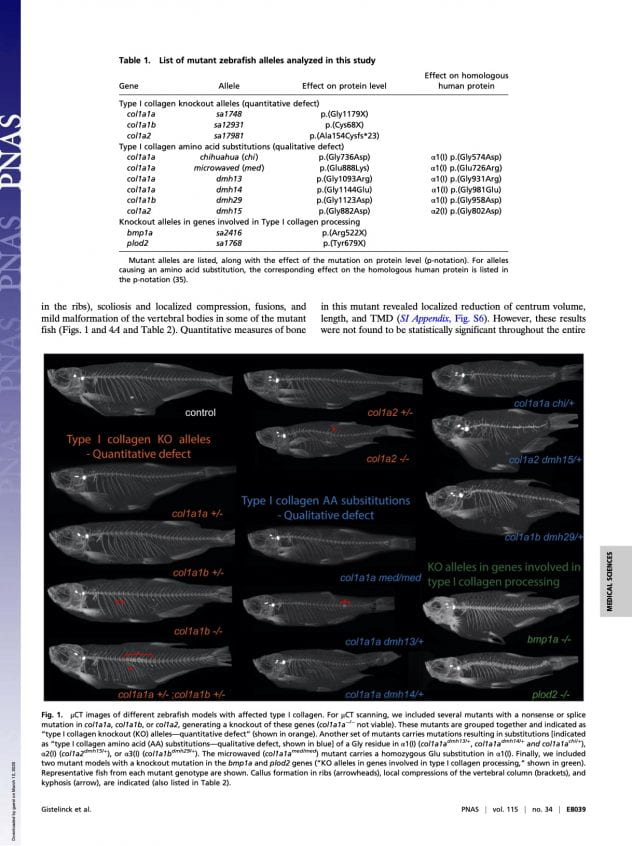 Gistelinck CA, et al. Zebrafish type I collagen mutants faithfully recapitulate human type I collagenopathies. Proc Natl Acad Sci, 2018, 115:E8037-E8046.
Gistelinck CA, et al. Zebrafish type I collagen mutants faithfully recapitulate human type I collagenopathies. Proc Natl Acad Sci, 2018, 115:E8037-E8046.
Gistelinck et al. systematically analyze skeletal phenotypes in a large set of zebrafish with diverse mutations representing different genetic forms of human Osteogenesis Imperfecta (OI).
Furthermore, we provide insight into how zebrafish and human type I collagen are compositionally and functionally related, which is relevant in the interpretation of human type I collagen-related disease models. Our studies reveal a high degree of intergenotype variability in phenotypic expressivity that closely correlates with associated OI severity. Furthermore, we demonstrate the potential for select mutations to give rise to phenotypic variability, mirroring the clinical variability associated with human disease pathology.
- Systematic analyses of large set of zebrafish OI mutants provide insight into how zebrafish and human type I collagen are compositionally and functionally related.
- High inter-genotype variability in phenotypic expressivity closely correlates with associated OI severity
- Select mutations to give rise to phenotypic variability, mirroring the clinical variability associated with human disease pathology.
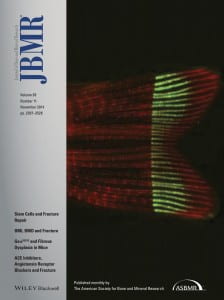 Neuromuscular dysfunction impairs regeneration in zebrafish
Neuromuscular dysfunction impairs regeneration in zebrafish
Recidoro and Roof et al. establish amodel of neuromuscular dysfunction in zebrafish, and show that this impairs blastema-mediated bone regeneration. This article was the 3rd zebrafish article in JBMR’s history, the first on its cover, and named to JBMR’s eCompendium.
- Botulinum toxin (BTx) induces neuromuscular dysfunction and muscle paralysis in zebrafish
- Neuromuscular dysfunction impairs bone regeneration
 Training the next generation of bioengineers
Training the next generation of bioengineers
Jacobs CR, Huang H, Kwon RY. Introduction to Cell Mechanics and Mechanobiology. Garland Science, 2012.
In this textbook, Jacobs, Huang, and Kwon use cell mechanics as a substrate to teach solid, fluid, statistical, and polymer mechanics to undergraduate and graduate bioengineering students. Adopted in university courses worldwide, it was called “potentially transformative for the field” by the Journal of Molecular and Cellular Bioengineering.
FULL BIBLIOGRAPHY
See our NCBI bibliography for a full listing of journal articles.
